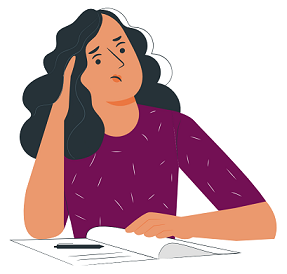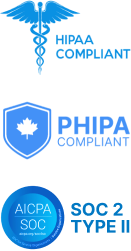Home > Blog > Persistent Depressive Disorder Treatment Plan
Persistent Depressive Disorder Treatment Plan
Author: Silvi Saxena, MBA, MSW, LSW, CCTP, OSW-C
Have your progress notes written for you automatically
Persistent Depressive Disorder, or PDD, formerly termed dysthymia, is a chronic subtype of depression which, if left untreated, persists for at least two years in adults and one year in children or adolescents. Whereas Major Depressive Disorder (MDD) involves severe and episodic depressive episodes. In PDD, the depressing symptoms are of longer duration and lower grade, yet they seriously impair daily functioning and quality of life.
Individuals with PDD may feel persistently sad, have low self-esteem, be fatigued, have a hard time concentrating, and their appetite may change; sometimes, they feel hopeless. Because it is a chronic state by nature, the treatment of PDD usually involves and includes psychotherapy, medication, lifestyle changes, and strategies that provide long-term support.
Psychotherapy as a Core Treatment for PDD
Psychoanalysis or verbal therapy is an important component of PDD management. Several treatments that have been proven effective in practice are also useful in controlling negative symptoms, enhancing emotional stability, and enabling the patient to adopt a more positive orientation and response (Walter et al, 2023).
Cognitive Behavioral Therapy (CBT): CBT is one of the most prominent and powerful therapies for PDD. It assists in evaluating thinking schemas that may be the root of persistent unsatisfied emotions and feelings of despair. These specific exercises aim to assist patients in identifying self-defeating attitudes such as all-or-nothing thinking, catastrophizing, and self-criticism, and replacing them with less distorted and more constructive thoughts. Furthermore, CBT includes behavioral activation techniques which enable a person to do more enjoyable and rewarding activities, which curbs the withdrawal and inhibition doers have due to PDD.
Interpersonal Therapy (IPT): Since relationship problems and social isolation are often thought to be the cause for the persistence of depressive symptoms, IPT has a major role in the treatment of PDD. The aim of IPT is to improve the interpersonal relationships, the ability to communicate, and the depression would most likely be made worse by the conflict. Thus, IPT enables the patient to develop more positive relationships and strengthen the support system by resolving complicated grief, transitions of roles, and interpersonal problems.
Dialectical Behavior Therapy (DBT): Traditionally used for borderline personality disorder, DBT techniques can be quite useful for those with PDD who present with emotional dysregulation and self-destructive behaviors. Mindfulness, distress tolerance, emotion regulation, and interpersonal effectiveness are emphasized in DBT, which helps the individual navigate their emotions more effectively and improves overall well-being.
Psychodynamic Therapy: Although a few people with PDD do respond to psychodynamic therapy, which looks for unconscious conflicts, early childhood experiences, and unresolved emotional wounds buried in the subconscious mind that may be responsible for chronic depression. It allows the person to come into contact with his deep-seated patterns and behaviors to facilitate emotional healing.
Since PDD is a chronic condition, psychotherapy can often necessitate continuous sessions over a very long period of time. Frequency and duration vary depending on each client's particular needs, symptoms, and the effects of therapy (Dodd et al, 2021).
Medication Management for PDD
In many cases, medication is a key component of treating PDD, particularly when symptoms are moderate to severe or when psychotherapy alone does not provide sufficient relief. Antidepressant medications work by altering neurotransmitter activity in the brain, helping to regulate mood, improve energy levels, and reduce feelings of hopelessness.
Selective Serotonin Reuptake Inhibitors (SSRIs): SSRIs are commonly prescribed for PDD due to their effectiveness and relatively mild side effect profile. Medications such as fluoxetine (Prozac), sertraline (Zoloft), and escitalopram (Lexapro) increase serotonin levels in the brain, which can help improve mood and emotional stability.
Serotonin-Norepinephrine Reuptake Inhibitors (SNRIs): SNRIs, such as venlafaxine (Effexor) and duloxetine (Cymbalta), work by increasing both serotonin and norepinephrine levels, potentially providing additional benefits for individuals with persistent low energy and concentration difficulties.
Tricyclic Antidepressants (TCAs) and Monoamine Oxidase Inhibitors (MAOIs): These older classes of antidepressants are generally reserved for cases where SSRIs or SNRIs have been ineffective, as they come with a higher risk of side effects and dietary restrictions.
Atypical Antidepressants: Bupropion (Wellbutrin) and mirtazapine (Remeron) are alternative antidepressants that may be used in PDD treatment. Bupropion, which affects dopamine and norepinephrine levels, can be particularly helpful for individuals experiencing low energy and motivation, while mirtazapine is often prescribed for those struggling with insomnia and appetite changes.
Medication management requires close monitoring by a healthcare provider to ensure optimal dosage, effectiveness, and minimal side effects. Adjustments may be necessary over time, and some individuals may need to try different medications before finding the most effective treatment (Karrouri et al, 2021).
Lifestyle Modifications for Long-Term Symptom Management
In addition to therapy and medication, making lifestyle changes can significantly improve outcomes for individuals with PDD. These modifications focus on improving physical health, reducing stress, and promoting emotional well-being.
Regular Physical Activities: Stress hormones are reduced during exercises such as strength training, walking, and dance while feel-good endorphins are increased. This increase in mood enhances overall mental health while combating symptoms of depression.
Healthy Nutrition: Limiting alcohol and intake of sugar and processed foods can help avoid energy crashes while a diet filled with omega 3, B vitamins, and magnesium can promote emotional stability and brain function.
Consistent Sleep Schedule: PDD patients tend to suffer from frequent sleep disturbances. Avoiding screens prior to sleep along with setting a nurturing environment improves overall sleep quality and hygiene which aids to combats PDD symptoms.
Mindfulness and Relaxation Techniques: Stress can be managed by practicing deep breathing, muscle relaxation, and imagery which in turn improves the emotional resilience of the individual.
Building a Strong Support System: Since PDD can lead to social withdrawal and isolation, fostering supportive relationships is essential for long-term recovery. Engaging in meaningful social interactions, joining support groups, and maintaining connections with friends and family can provide emotional validation and encouragement. Therapy groups or peer support networks can also offer valuable guidance and a sense of community.
Long-Term Management and Relapse Prevention
Since PDD is chronic in nature, it is important to develop long-term strategies for management to allow for maintenance of gains and prevention of relapse. Follow-up with a therapist or a psychiatrist enables treatment adjustments where necessary. A mood journal is very valuable in tracking emotions, triggers, coping strategies such as relaxing techniques, and identifying early warning signs of deterioration. There is also increased motivation with the provision of structured activities, goal achievement, and active participation in other enjoyable pursuits, which leads to better health (Kato et al, 2021).
Education concerning PDD is of great importance for long-term management, and understanding the disorder helps work out individual triggers and coping mechanisms to play an active role in the effects of this disorder.
Persistent Depressive Disorder is a difficult condition and thus requires integration of different aspects in single comprehensive individualized treatment plan. Through the combination of psychotherapy and medical support, lifestyle changes, and social support, alongside the planned long-term management, remarkable changes in mood, functionality, and overall quality of life for people suffering from PDD is achievable. Even though progress can be slow, adaptability through In the case of Borderline Personality Disorder, Dialectical Behavior Therapy is usually applied, but the techniques can be extremely beneficial in treating PDD as well.
References
Dodd, S., Bauer, M., Carvalho, A. F., Eyre, H., Fava, M., Kasper, S., ... & Berk, M. (2021). A clinical approach to treatment resistance in depressed patients: What to do when the usual treatments don’t work well enough?. The World Journal of Biological Psychiatry, 22(7), 483-494.
Karrouri, R., Hammani, Z., Benjelloun, R., & Otheman, Y. (2021). Major depressive disorder: Validated treatments and future challenges. World journal of clinical cases, 9(31), 9350.
Kato, M., Hori, H., Inoue, T., Iga, J., Iwata, M., Inagaki, T., ... & Tajika, A. (2021). Discontinuation of antidepressants after remission with antidepressant medication in major depressive disorder: a systematic review and meta-analysis. Molecular psychiatry, 26(1), 118-133.
Walter, H. J., Abright, A. R., Bukstein, O. G., Diamond, J., Keable, H., Ripperger-Suhler, J., & Rockhill, C. (2023). Clinical practice guideline for the assessment and treatment of children and adolescents with major and persistent depressive disorders. Journal of the American Academy of Child & Adolescent Psychiatry, 62(5), 479-502.
Disclaimer
All examples of mental health documentation are fictional and for informational purposes only.
Have your progress notes written for you automatically
See More Posts
Company
Product
Legal
Contact us
Who we serve
Psychotherapists
Join us







